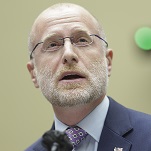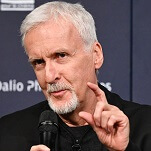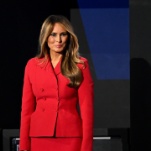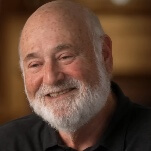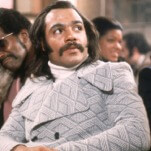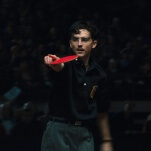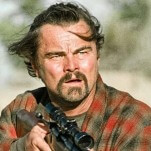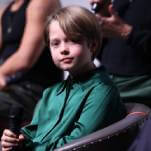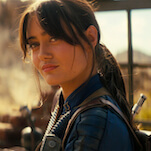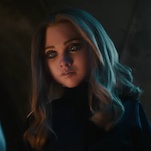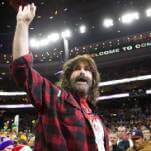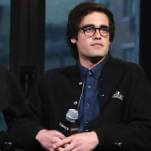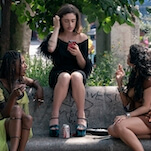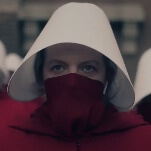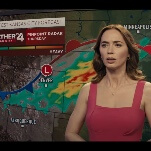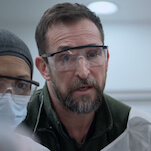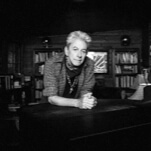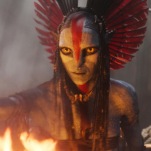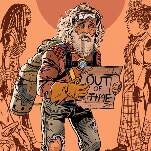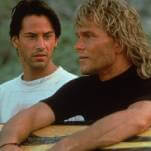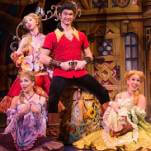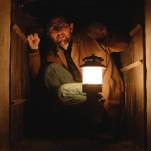Nick is kids: On the importance of diversity in children’s television

About a week ago, Flavorwire published an interview with Mathew Klickstein, author of Slimed: An Oral History Of Nickelodeon’s Golden Age. The interview, conducted by A.V. Club contributor Pilot Viruet, found the ’90s nostalgia apologist likening Nickelodeon’s emphasis on diversity to blackface, attributing Clarissa Explains It All’s retroactive popularity to women bloggers, and insisting that modern Nick shows like Sanjay And Craig are “awkward” because “there’s no reason for [the main character] to be Indian—except for the fact that [Nickelodeon president] Cyma Zarghami and the women who run Nickelodeon now are very obsessed with diversity.” Oof. (Full disclosure: Both associate editor Erik Adams and myself were in talks with Klickstein at one point about writing a Nickelodeon book together. Our concepts and preferences about the then-theoretical book didn’t match up, and so we parted ways, with Klickstein going on to write Slimed.)
While Klickstein is obviously entitled to have any opinion he wants—even a wrong-headed one—lots of culture-obsessed writers have since spoken out against his opinions, snarkily pointing out inaccuracies in his piece or concluding, as Jezebel did, that “life is really tough for men, OK?” And while Klickstein certainly did deserve “to get his ass handed to him,” as Jezebel puts it—there are major flaws an inaccuracies in his arguments, both theoretically and factually, like how many seasons Doug and Hey Dude got, for example—most of these reaction pieces focus more on how racist or sexist Klickstein sounds rather than on why it matters that he said those things. Yes, saying that the mere act of non-Indian writers penning an Indian character is equivalent to blackface is obviously absurd. But why do we care if children’s television shows are diverse? Does Nickelodeon care? And just how much of a say did the creators of The Adventures Of Pete And Pete, for instance—a show Klickstein said “was made by white people and is about white people”—have in making their show diverse?
In short, a lot. While Nickelodeon has historically been pro-diversity—with executive vice president of communication Dan Martinsen telling The A.V. Club that “diversity has always been and continues to be a part of our brand’s DNA”—Hey Arnold!’s setting in a diverse, multi-racial neighborhood was a decision made by the show’s creator, Craig Bartlett. As he told The A.V. Club in an interview for this piece, Hey Arnold!’s setting “spoke about what it was like to live in a modern city,” where “you have all these different ethnicities mixed up.”
That on-screen diversity is important. As a piece from The Atlantic notes, “African-American, Hispanic, Asian, and disabled actors have been struggling to achieve proportional and fair representation on TV since the age of Andy Griffith.” And while entertainment dynamics have no doubt changed since Andy and Opie wandered on over to the ol’ fishin’ hole, a recent UCLA study found that minorities had lead roles in just under 15 percent of cable comedies and dramas, despite accounting for about 36 percent of the United States’ population. (Interestingly, Bartlett also told us that PBS, where his show Dinosaur Train runs, gets about a quarter of its viewers from Latino households.)
And while you could make the argument that, “Hey, we all like Batman, and he’s white, but we can all learn from him, so who cares?” a study published in Communication Research from 2012 found that “children are affected when they don’t see themselves represented on TV.” Further, “it affects them when the young people who look like them are seen doing something wrong.” In fact, the same study found that TV exposure directly correlated to a decrease in self-esteem for white and black girls and black boys, while white boys experienced a self-esteem boost. In essence, when girls and black boys are shown acting stupid, deferential, or malicious on TV, those messages get to kids. And if they’re not even shown at all? Forget it.
Children’s television should be educational. While preschool shows can drop numbers and letters, shows for older kids should aim to enrich. Clarissa Explains It All didn’t teach about colors, but it taught that boys and girls could be friends, and that you would ultimately be rewarded for being yourself. Moreover, as the show’s creator Mitchell Kriegman explained in an interview for this piece, Clarissa was part of Nickelodeon’s brand identity, as both the show and the network were legitimately concerned with representing another then-underserved minority: kids. Geraldine Laybourne, who headed up Nick in the ’80s through the mid-’90s, strongly believed that kids should be empowered as a smart subculture, one with a point of view and a diversity within their own group. Clarissa, for instance, was occasionally smarter than her parents, had agency and purchasing power, and possessed a strong point of view. As Kriegman told us, sometimes “diversity is a lot bigger than people.”


